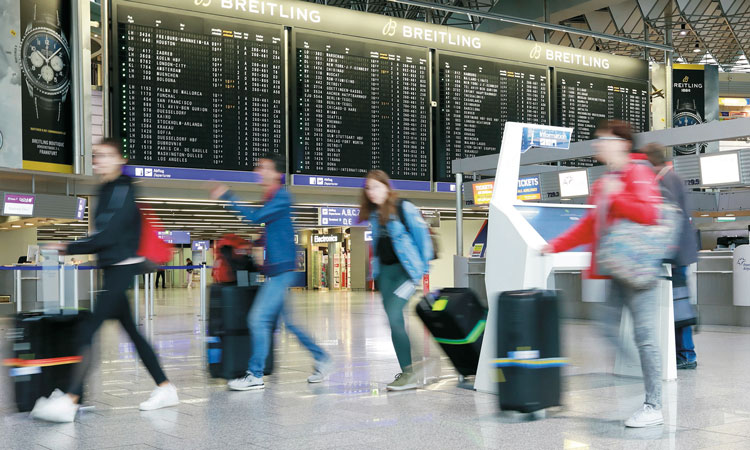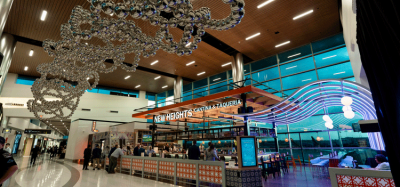Pioneering AI in the aviation industry
- Like
- Digg
- Del
- Tumblr
- VKontakte
- Buffer
- Love This
- Odnoklassniki
- Meneame
- Blogger
- Amazon
- Yahoo Mail
- Gmail
- AOL
- Newsvine
- HackerNews
- Evernote
- MySpace
- Mail.ru
- Viadeo
- Line
- Comments
- Yummly
- SMS
- Viber
- Telegram
- Subscribe
- Skype
- Facebook Messenger
- Kakao
- LiveJournal
- Yammer
- Edgar
- Fintel
- Mix
- Instapaper
- Copy Link
Posted: 4 June 2020 | Alexander Laukenmann - Fraport AG | No comments yet
Describing the numerous applications of AI at Frankfurt Airport, Alexander Laukenmann, Head of Airside and Terminal Management, Corporate Safety and Security at Fraport AG, demonstrates the breadth of benefits made available by this technology.


Today, air transportation is an indispensable part of modern life and required for economic prosperity in a globalised economy. Nevertheless, there are a lot of challenges facing the aviation industry. Competition is intensifying – between airlines, between airports and between aerospace manufacturers. Customer demands are becoming more challenging, with passengers asking for a better travel experience, in the air and on the ground. At the same time, our industry is being impacted by capacity constraints, with world aviation traffic forecast to double by 2040.
These challenges bring opportunities for those who are agile and innovative. Fraport AG has a tradition of innovation stretching back over 95 years. We have harnessed new technologies and ideas to transform Frankfurt Airport (FRA) from a small airfield into a key aviation hub in the global air transportation system.
Using artificial intelligence
We are continuously testing a wide range of new innovations here at FRA to find the best solutions for enhancing operations and passenger experience. Within this, there are many ways in which we try to implement artificial intelligence (AI).
Self-driving robot
In the autumn of 2019, we conducted a trial where a self-driving guide robot called YAPE was deployed in FRA. YAPE is an AI-based transport and delivery robot that accompanied transit passengers to their gates and helped them transport small luggage. For five days, passengers were able to place small luggage items in the robot’s luggage compartment and let YAPE guide them to their gates. The robot can move freely throughout the terminal thanks to its integrated navigation system. Since the self-driving electric robot senses its surroundings, it is able to circumvent obstacles. With this test, we wanted to find out what aspects of AI and robotics can help to further improve the quality of services at FRA.
To our surprise, it was not only children who were excited by the robot. Passengers of all age groups from all around the world expressed the same high level of enthusiasm and curiosity about YAPE. We found this interesting, as older generations tend to be more resistant to new and unknown technologies. Following the successful pilot, we intend to run a follow-up test with an updated YAPE model in a few months. Th is new test will further assess the interaction between passengers and YAPE. Ultimately, our intention is to establish YAPE as a guide robot service for passengers transferring via Frankfurt Airport within this year.
Passenger forecast models
However, the ways in which we use AI are often invisible to the passenger; YAPE is an exception in this regard. Behind the scenes, FRA’s terminal management is planning to introduce AI models to calculate passenger forecasts. These models will take all available data into consideration – from weather to traffic to passenger numbers – and predict how many people will be in any given location at a specific time.
By calculating the time it takes passengers to make their journey through the airport, and logging their progress at every step on the way, we can be better prepared for passenger peaks and adjust staff allocation accordingly, or divert them to other process points. In the future, we hope to cooperate with airlines to integrate their data into our models in order to provide airport operators with an even better overview.
Aircraft push backs
Another AI project we are running is improving turnaround prognosis for ground operations. The aim is to be able to answer the question ‘when is the aircraft ready for push back?’ with greater accuracy than is currently possible. In order to attain this goal, we calculate, together with external partners, the timestamps of hundreds of thousands of flights and identify the key influencing factors that could affect the prediction of events on the apron. We then use their video analytics to support the prediction.
Video analytics can transform standard CCTV systems into intelligent and effective detection and alert systems. The technology is currently already capable of recognising people’s faces, vehicles, animals and baggage automatically. Intelligent video analytics software can not only recognise different behaviours, but also create an alarm on a user-defined rule. At FRA, the first cameras have been installed for test purposes on the apron for the technical documentation and evaluation of ground operations. By testing video analytics in real operating conditions, we want to see if there are any factors that are, as yet, unaccounted for. Combining turnaround prognosis with real-time data delivered by video analytics, it will be possible to distribute better timestamps to all parties involved in the handling of a flight, resulting in an increased level of efficiency.
AI as an asset
Our experience has shown us that, despite the lengthy process that goes into developing a powerful AI model, the benefits heavily outweigh the costs. AI can be a great asset, allowing us to relieve existing personnel of the burden of mundane and repetitive tasks. As a result, they will have more time to take on the more specialised and fulfilling tasks.
We are excited to develop even more uses for AI at FRA. In line with Fraport’s motto, ‘Gute Reise! We make it happen’, we are constantly upgrading and extending our services for an even better passenger experience. That’s why we are proud to be one of the pioneers of AI in the aviation industry


Issue
Related topics
New technologies, Passenger experience and seamless travel, Passenger volumes, Security, Sensory technology


















